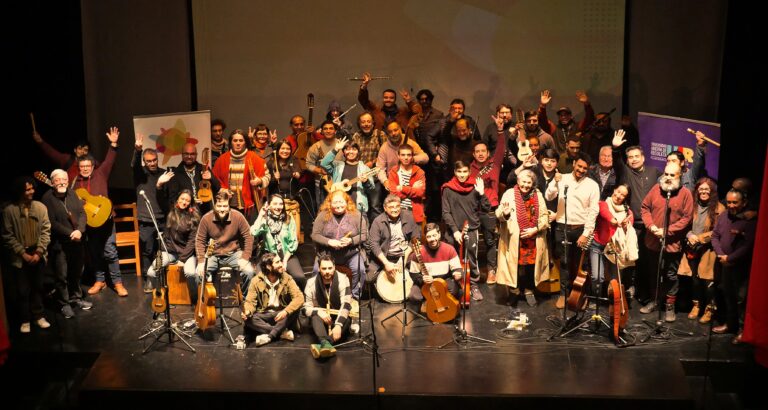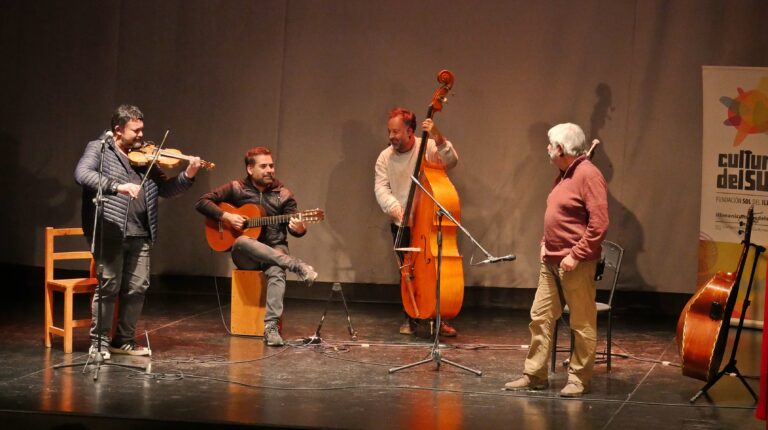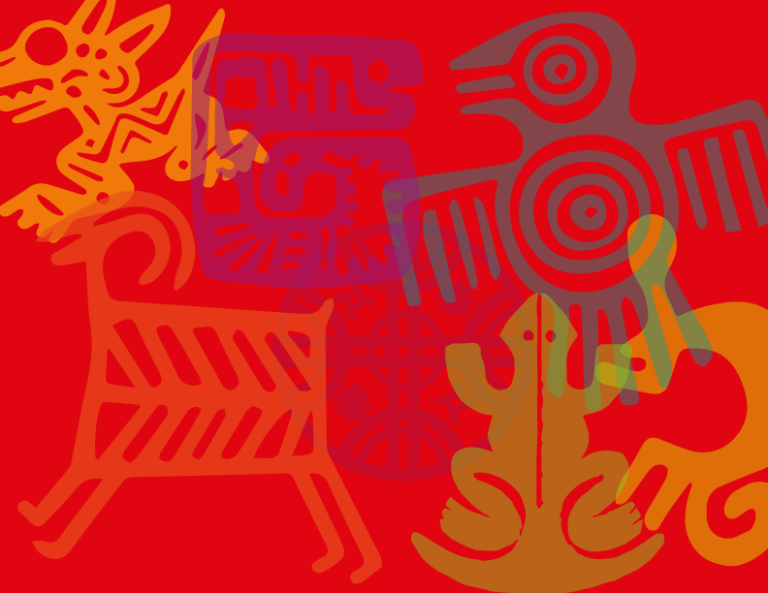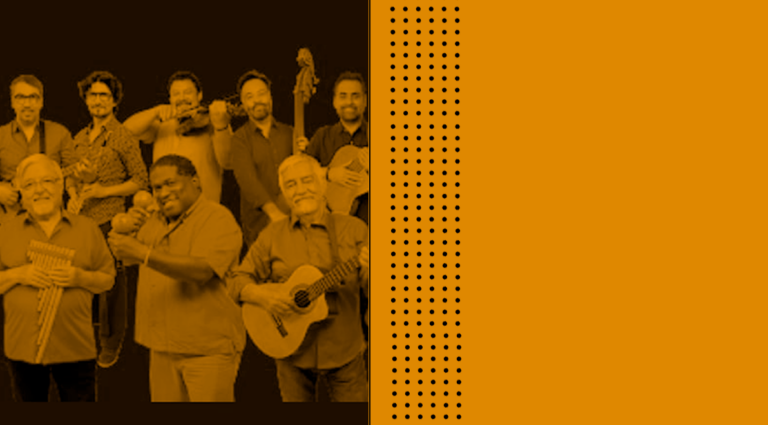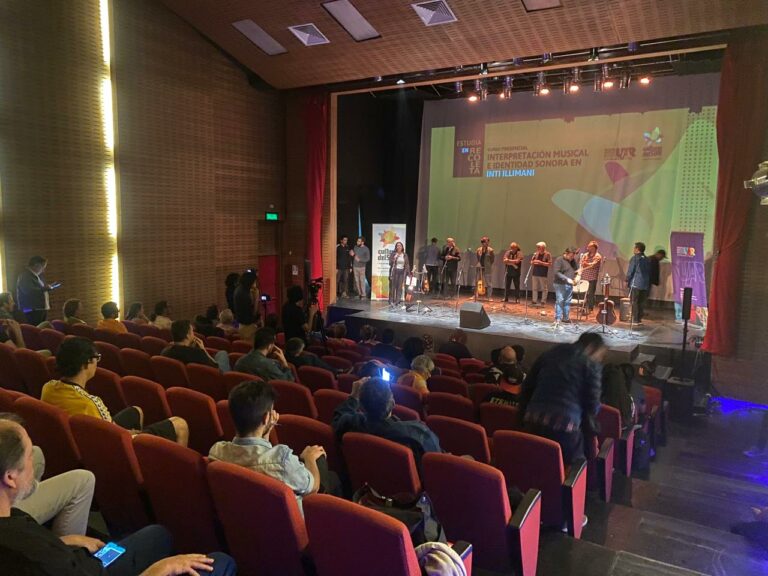Last Wednesday, May 15, half of the sessions considered the in-person course were completed Musical interpretation and sound identity in Inti Illimani, in which the participants have been able to learn - from first source - the experience and exploration with the instruments that constitute the musical proposal and the sound identity of Inti Illimani, forged in more than fifty years of experience dedicated to popular music and of Latin American roots, with influences from various parts of the world.
After the inaugural session, the second session took place that included the presence of the musicians Christian 'Búho' González and Efrén Viera as teachers, which focused on the review of the different percussion instruments that the group has been incorporating in its years of existence. trajectory.
Both musicians went through different moments of the formation and the percussion elements that have been used, starting with the bass drum, a percussion instrument, which they indicated "is the backbone of Inti Illimani's percussion since it is the first percussion used and has been present until today.
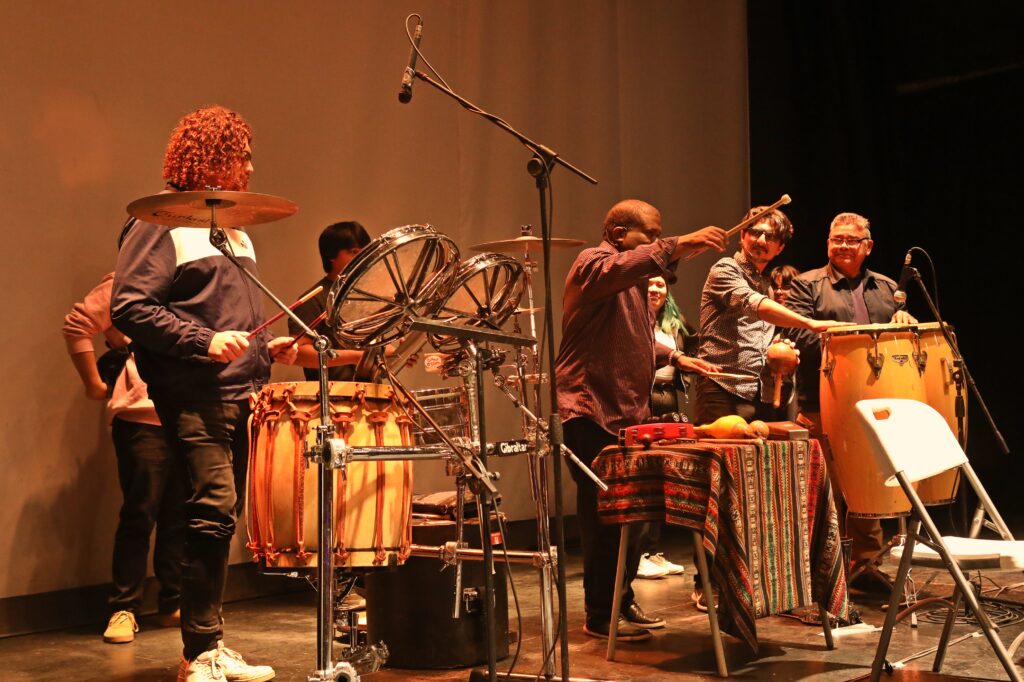
Other instruments presented and linked to the current and past sound of the group were the maracas, the maracones, the huiro, the bongo, the cajones, the tumbadoras, among others. To finally focus on 'the cage', a 'construction' that synthetically brings together different percussion instruments, and which explained the practicality of this battery of instruments, both in live performance and in recordings. At different times during the session the students joined in the interpretation of the instruments.
The third session of the course was marked by a historical review of the Andean winds and their presence in the group. In it, the brothers Jorge and Marcelo Coulon, along with Juan Flores and David Azán, reviewed their sound and interpretation in several of the group's compositions, in addition to inviting students from the course to join the stage in a couple of songs.
In their interventions, the Coulon brothers reviewed the most historical aspects of the presence of these instruments in the different registers and songs of the group. For his part, Flores focused his presentation on reviewing the sound of each of the instruments he presented, as well as their origin and differences with respect to different regions of the American continent.
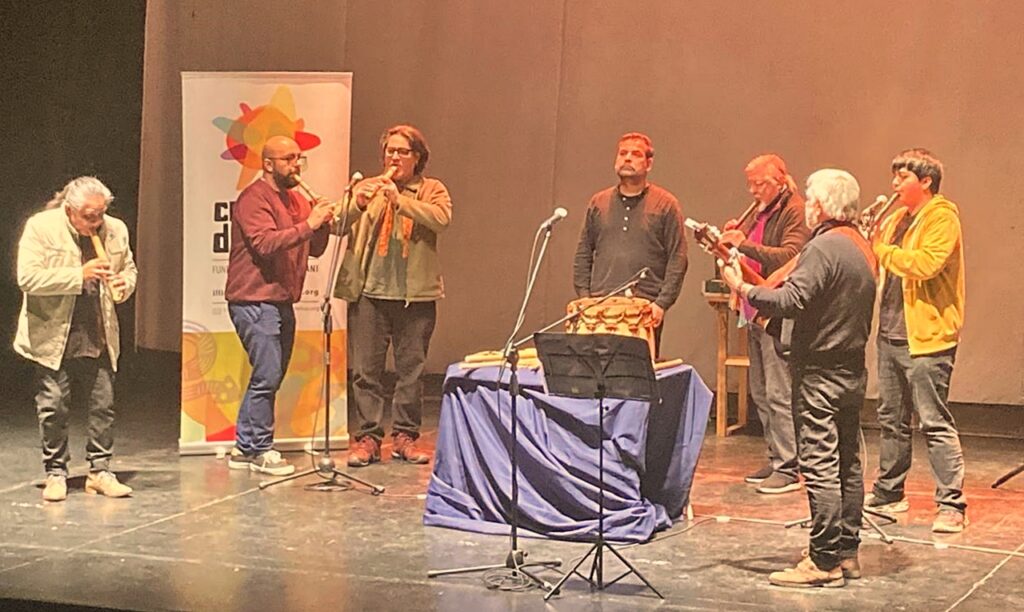
In the fourth session, it was up to César Jara, musical director of Inti Illimani, and David Azán to deliver the experience and sound of the guitar and other string instruments to the more than forty course participants. For this they had the support in the class of Jorge and Marcelo Coulon, who were providing the different developments and uses of the guitar and the Venezuelan tiple in the experience of the musical group.
For Inti Illimani, its members explained, the rhythmic, melodic, harmonic guitar allows its own genre, without the use of percussion. They explain that there has been a way of strumming that is part of one's own sound, allowing the guitar to be like a color palette that allows for the construction of multivariate ensembles.
In relation to the tiple, they explained that it arrives in Chile and is integrated into the sound of the New Song
Chilean, with a line that Víctor Jara installed from theatrical experimentation, and another that follows,
different, which comes from Inti Illimani with sounds of Central American proximity. At the end of the
session, the members of Inti Illimani performed the composition with four students La
Departure, creation of Víctor Jara.

